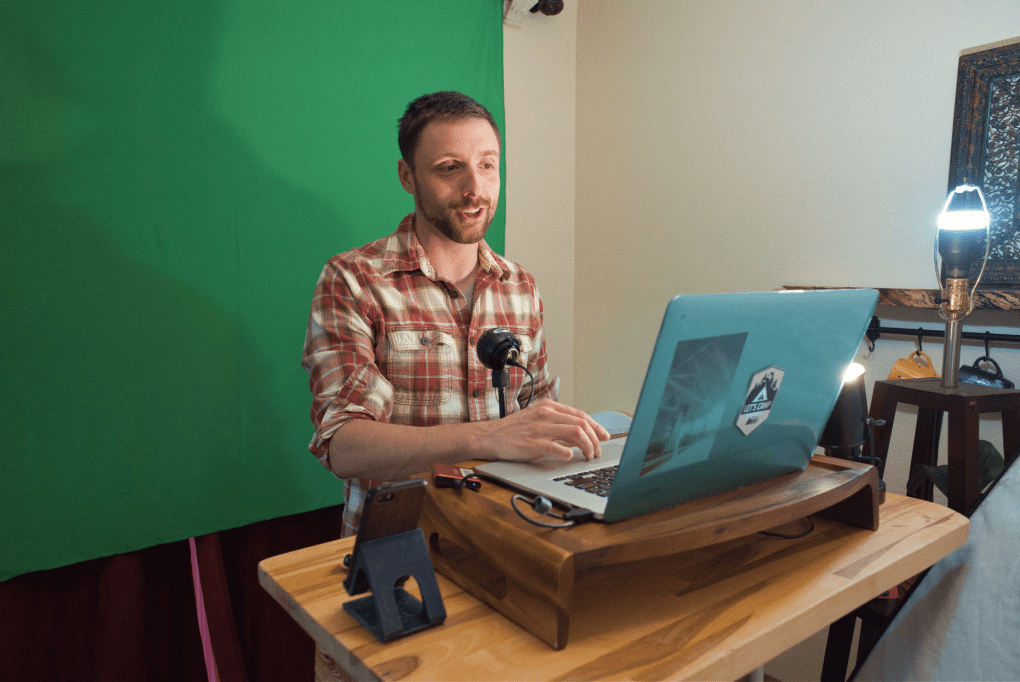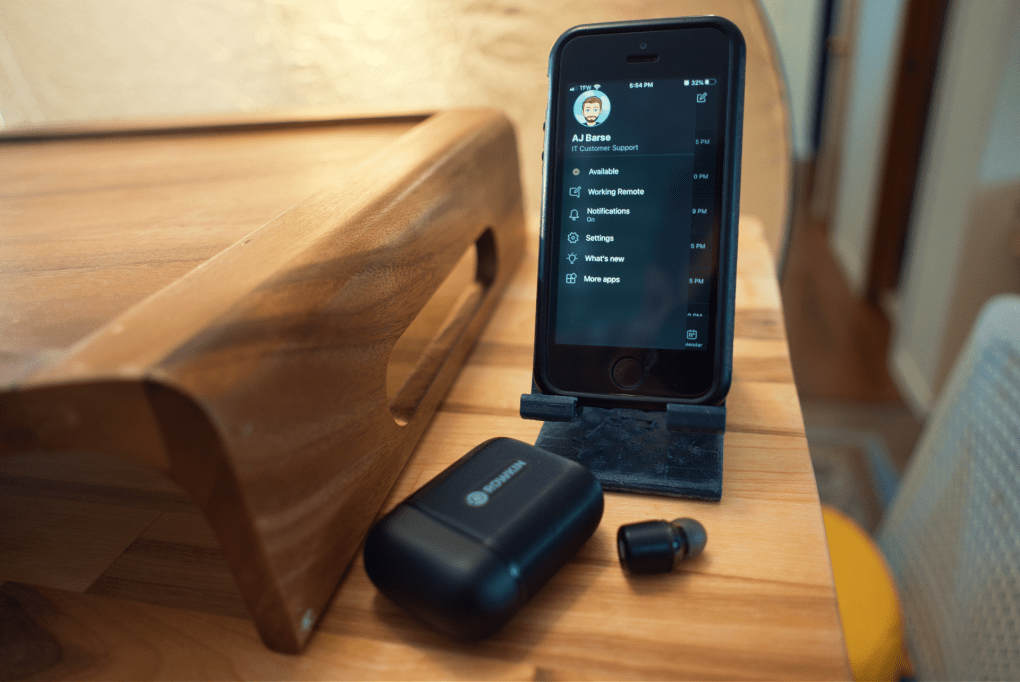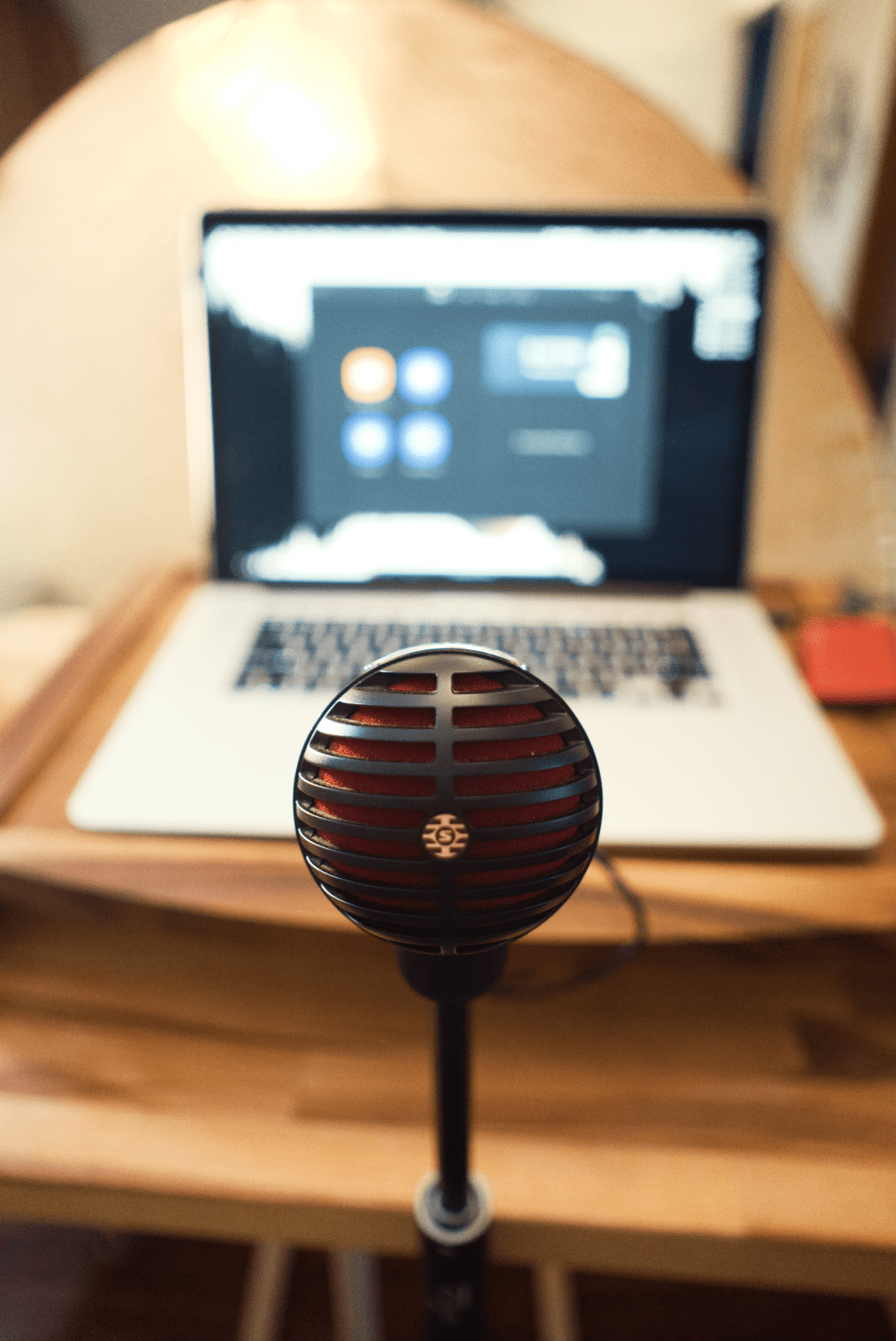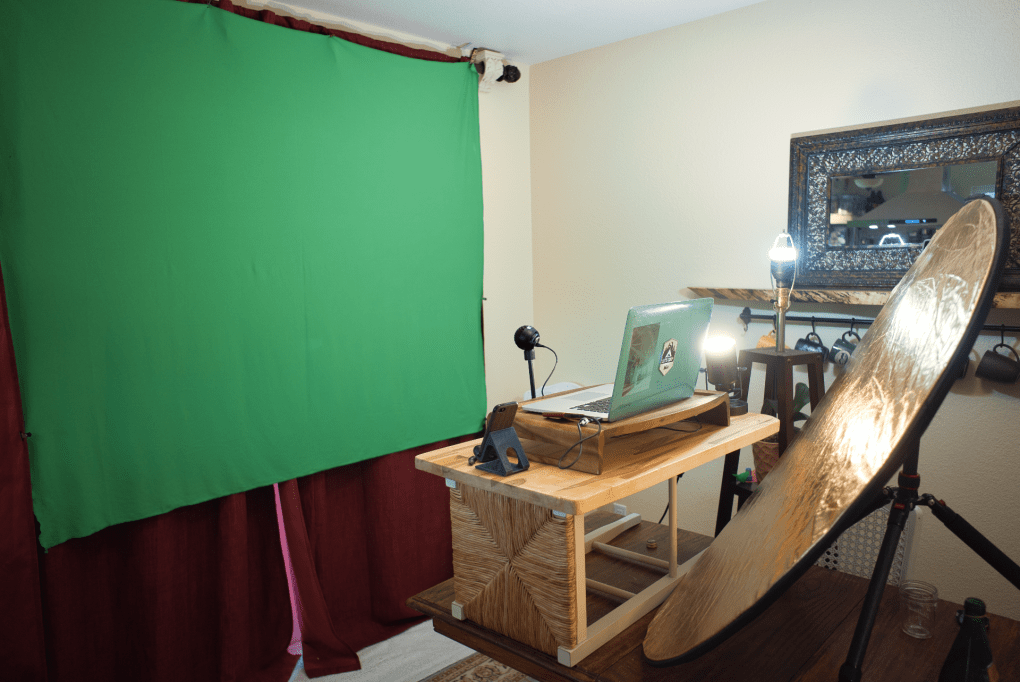In Washington state and the world over, Covid-19 has made educators and ed-techs alike quickly reevaluate what can and can’t be done remotely for teaching and learning. But, in this content-creator era, being able to podcast, vlog, live stream, or create well polished content from one’s dining room has never been more accessible. As a well armed photographer, a green screen, reflector, and tripod are things that I regularly have on hand. So, for those looking to level up their home educational recording kit, in this post I submit to you a real picture of an ad-hoc studio (i.e. my dining room) and a list of the things used to create the (upcoming) Canvas Commons module for the STC on Remote Podcasting.

A sideways barstool with a sheet of wood and a tv stand makes for a standup desk with a MacBook Pro 
Bluetooth headphones for communication as well as in ear monitoring with recording 
The MV5- tried and true podcasting mic by the Bellingham Podcast 
Ad-Hoc recording studio in AJ’s (what is usually) dining room
Setup:
- Green Screen drop cloth
- Helpful if you have any video conferencing software that can put a background behind you, or if you are creating video resources and want a floating effecting for your picture-in-picture
- LIFX bulbs
- A simple connected (wifi) light bulb will help with getting more light into your scene, and in the case of these they can also help control the (kelvin) color temperature.
- Photographer Reflector
- A quick and easy way to get some fill light on yourself, set it in front of yourself and tip it towards your light and let if add just a little reflected light on you.
- Shure MV-5
- One of my favorite things about this microphone is that it has a ‘quarter-twenty’ mount, aka the screw hole that will mount to any tripod. It comes with an iPhone cable to work on iOS or any Mac or PC and it is just the gold-standard by The Bellingham Podcast…need I say more
- Rode smartLav+
- A small but mighty lavaliere omnidirectional microphone. Made plug and play into your phone’s 3.5mm headphone jack (iPhone’s, without one it can work with the Lightning-to-headphone adapter). It can run a little quite it, so connecting it to something like the Motive Audio app where you can gain it while you record is a big help.
- Gorilla Pod or Monopod/tripod Kit
- These are great for the MV-5 if you need various sized microphone stands. But in the case of the Monopod/tripod Kit it comes with a smartphone clip, which is an excellent option if you are trying to get a higher quality video (most phones these days have 4K cameras) of yourself or what you are demonstrating.
- Macbook Pro
- My personal preference. Mine is 5years old, and runs like a champ.
- Clothes pins (or chip clips)
- Simple way to hang up that greenscreen or drop cloth is to use clothes pins or chop clips you might already have in that kitchen drawer that you keep everything.
- Samsung T5 (500gb)
- Super fast SSD (solid state drive) with ample storage is your friend in these times. Video takes up a LOT of storage, and this little $100 drive is a life saver especially if you had a full laptop hard-drive before the corona outbreak.
- Tripod
- Again, good for your camera, phone, microphone…ore here being used here as a stand for the reflector.
- Bluetooth earbuds of choice (Rowkin Ascent Micro, SoundCore Liberty Air 2)
- Coffee…lots of coffee
Software:
- QuickTime Player (as a camera recorder- Mac)
- I use this with the internal camera on the Macbook, and use it to record my ‘floating head’ self. This can also be done in Monosnap (below) for PC users.
- Monosnap
- Its free(mium), Mac, PC, Chrome installable, and my go-to screen recording tool. It can also do picture-in-picture all within the app (won’t green screen), and allows you to do annotations on static screen shots you might need for PDF documents in your class.
- Video editor of choice
- Free video editors that don’t require Adobe or Final Cut Pro (more on that later)
- HitFilm (FXHome) – Mac/PC
- Blackmagic Davinci Resolve – Mac/PC/Linux
- Free video editors that don’t require Adobe or Final Cut Pro (more on that later)


You must be logged in to post a comment.